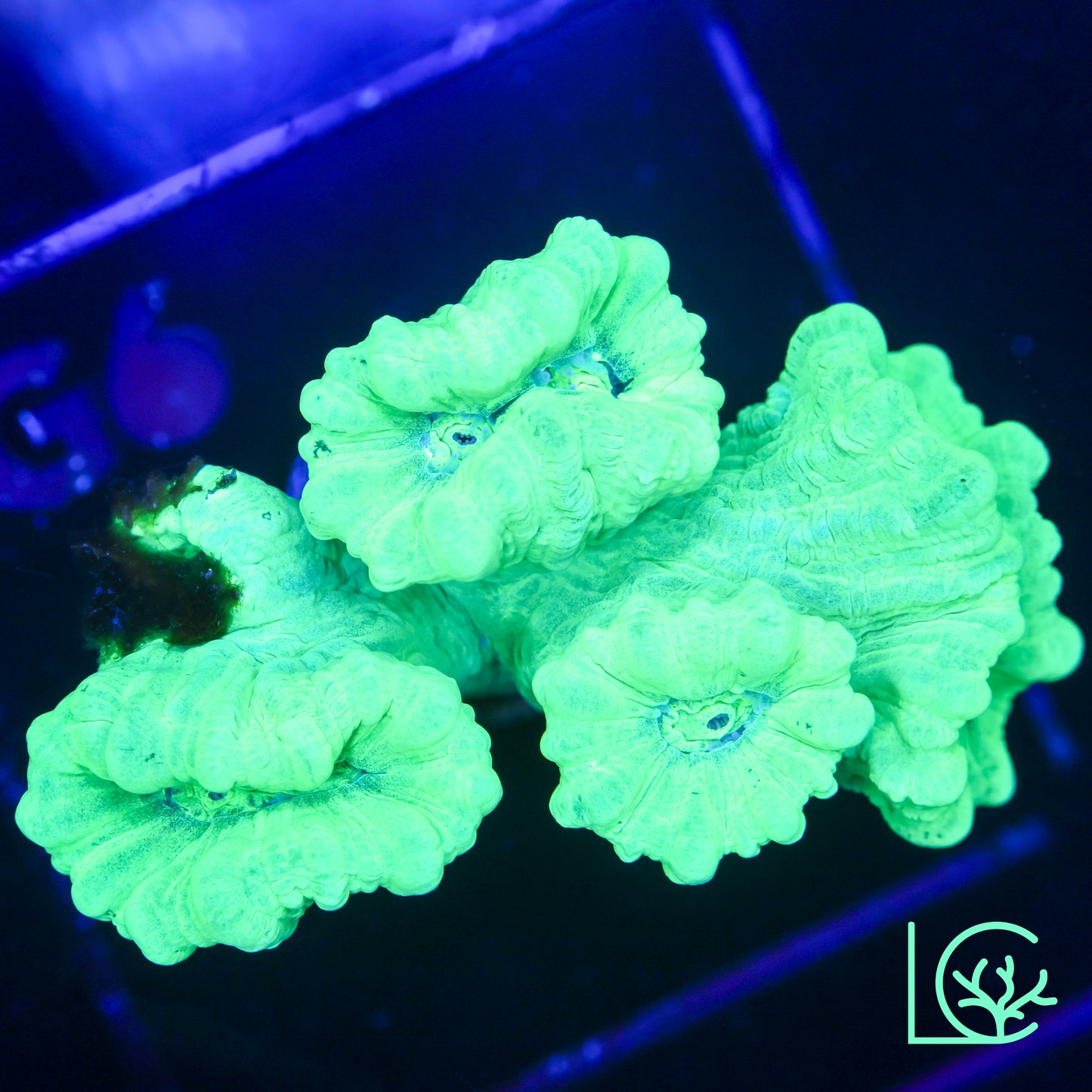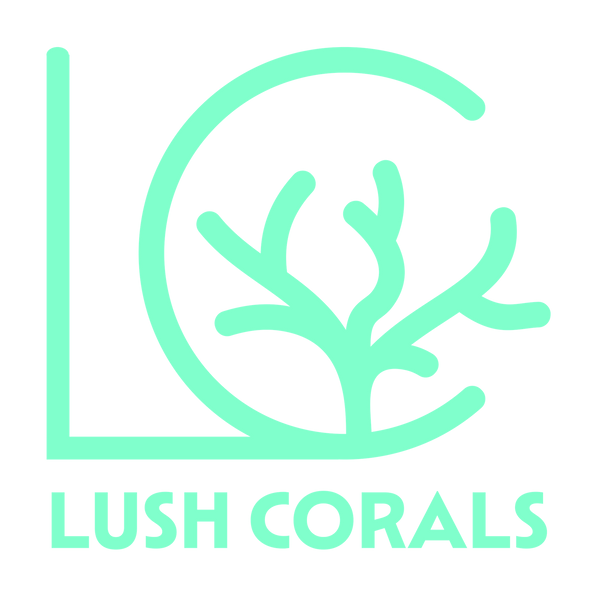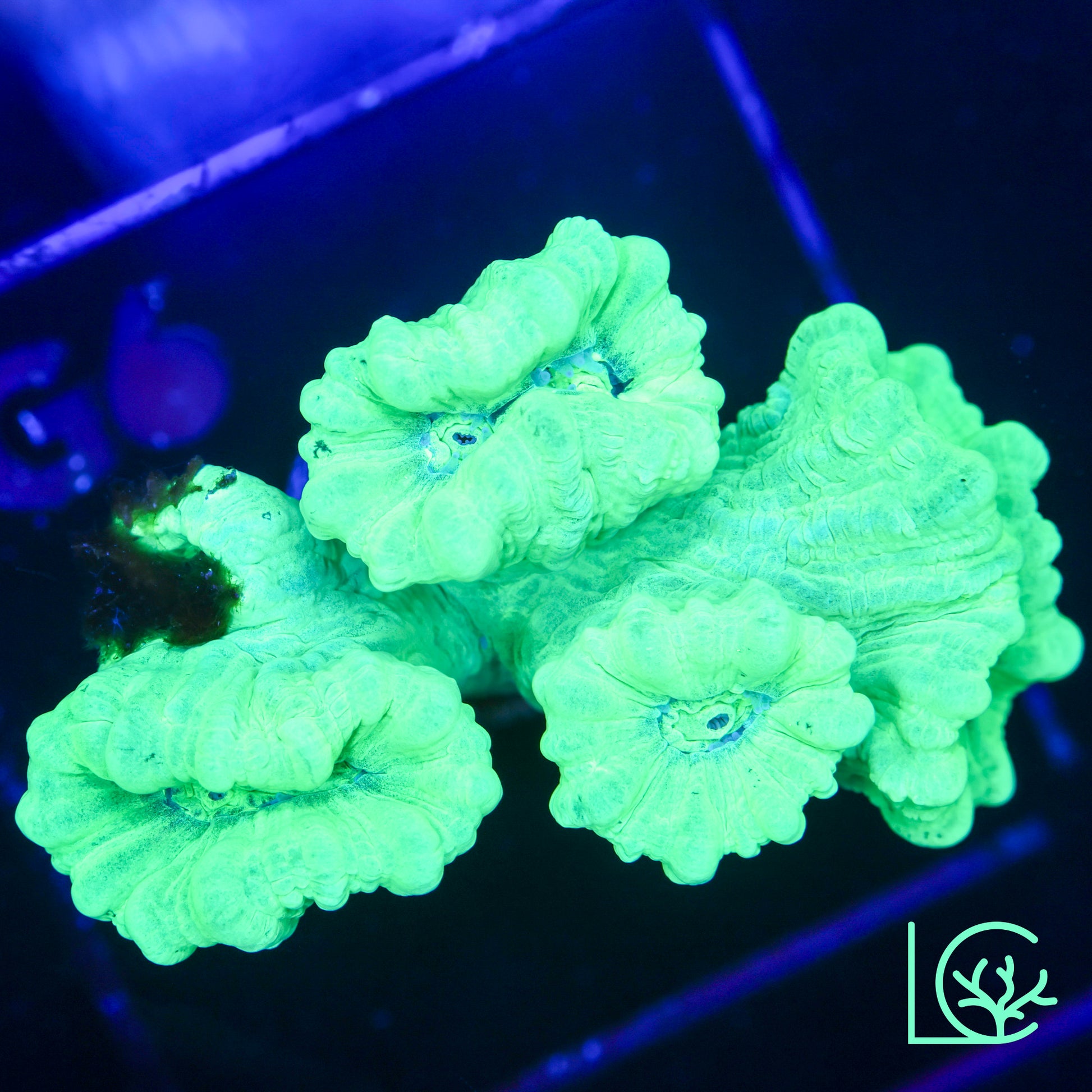- Description
- Reviews
Lush Corals presents the LC Toxic Yellow Candy Cane Trumpet
This WYSIWYG frag is in excellent health and has been fully aquacultured in our systems for years to ensure our customers receive healthy and pest free coral.
This 4 head frag is photographed on a 3/4" frag plug for sizing.
ABOUT TRUMPET CORAL
Trumpet corals (Caulastrea spp.), also known as Candy Cane Corals, are a popular species of large-polyp stony (LPS) coral recognized for their vibrant, tubular polyps that often come in shades of green, blue, or pink. These corals are relatively hardy and can adapt to a wide range of lighting and water conditions. Trumpet corals grow in clusters and can form large colonies, making them an attractive addition to reef aquariums. Their slow growth and easy care make them suitable for both beginner and experienced reef enthusiasts.
Lighting Requirements for Trumpet Coral
Trumpet corals prefer moderate lighting. They do best in areas with indirect or moderate light, similar to their natural habitat, where they receive filtered sunlight.
-
Ideal PAR Range:
100–200 PAR -
100–150 PAR: Best for vibrant coloration and healthy growth.
-
150–200 PAR: Can tolerate higher light but should be introduced gradually to avoid stress.
-
Spectrum:
-
A blue-dominant spectrum (420–470nm) is ideal to enhance their coloration.
-
Full-spectrum lighting works well for overall health and growth.
-
Lighting Type:
-
Trumpet corals do well under LED, T5HO, or metal halide lighting, as long as the light intensity is kept moderate.
-
Placement Tips:
-
Best placed in mid to lower areas of the tank where lighting is moderate and not too intense.
Water Flow Requirements for Trumpet Coral
Trumpet corals prefer gentle to moderate water flow. They thrive in calm, steady currents that allow their polyps to extend fully without being disturbed by strong flow.
-
Flow Type:
-
Gentle to moderate flow is ideal.
-
Avoid strong or turbulent currents that can damage the coral's delicate polyps or cause stress.
-
Why It Matters:
Proper water flow helps prevent debris from accumulating on the coral, supports healthy polyp extension, and ensures efficient nutrient exchange. -
Placement Tips:
Best positioned in areas with steady, indirect water movement, typically on the lower or mid-level sections of the tank.
No additional information available.



